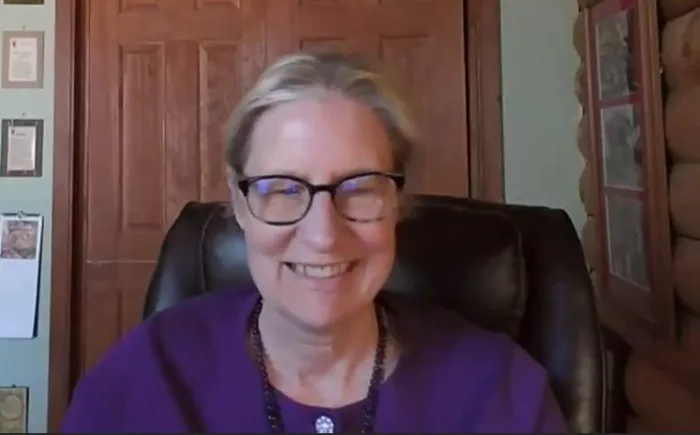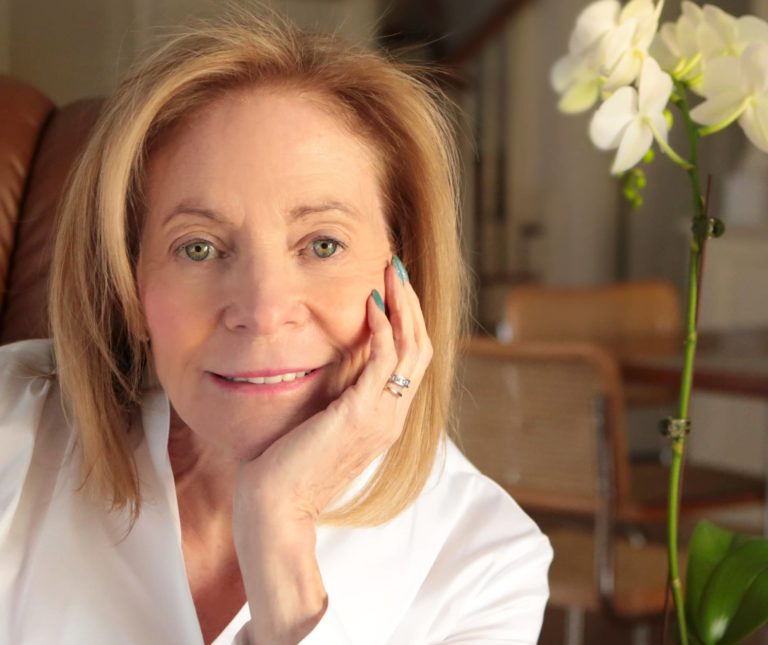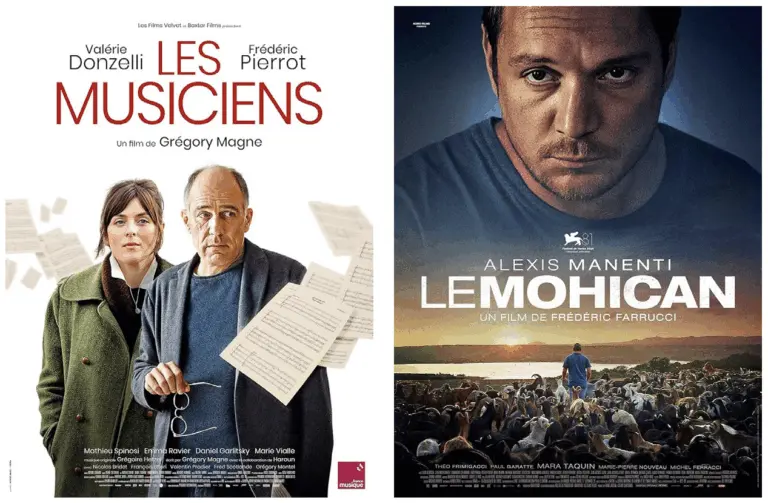
By Fred Wu
At the April 30 meeting of the Retired Men’s Association of Greenwich, docent Christi Moraga offered a comprehensive look into the Wadsworth Atheneum Museum of Art in Hartford, Connecticut. Established in 1842 and opened in 1844, the Wadsworth holds the distinction of being America’s oldest continuously operating public art museum. Moraga, a full-time docent since 2018 after retiring from 38 years of teaching French, Spanish, and English as a second language in Farmington, guided attendees through the museum’s history, key collections, and significant figures. She also highlighted the museum’s current relevance and community engagement.
The museum’s origins trace back to Daniel Wadsworth, an amateur artist and architect, who founded the institution. Daniel, who lived from 1771 to 1848, was a patron of notable artists of the time, including John Trumbull, Thomas Sully, Thomas Cole, and Frederic Edwin Church. He acquired the initial collection by purchasing works from the failing American Academy of the Fine Arts in New York and contributing his own personal collection. The museum building itself, constructed on the land where Daniel’s father, Jeremiah Wadsworth, a prominent Hartford elite and Commissary General for the Continental Army, once lived, was designed in the Neo-Gothic style to resemble a castle, by architects Ithiel Town and Alexander Jackson Davis. Early admissions cost 25 cents, allowing visitors to see numerous paintings, a stark contrast to the practice of paying the same amount to view just one painting in a private home. Notable early pieces also included portraits like Benjamin West by Sir Thomas Lawrence and a self-portrait by Rembrandt Peale. A controversial painting depicting the murder of Jane McCrea by Native Americans allied with the British during the Revolutionary War was also among the early acquisitions, a piece Moraga noted was seen as rallying support for the Continentals despite its racist depiction.
The museum’s collection and physical structure grew significantly over time thanks to generous donors. By the late 19th century, visits were declining, prompting Reverend Francis Goodwin to revitalize the Atheneum through fundraising, collecting over $400,000 in 1893 to modernize and expand it. Another major benefactor was Elizabeth Hart Jarvis Colt, widow of Samuel Colt. She was a significant patron of the arts, particularly fond of the Hudson River School, and also collected decorative arts from her travels. She donated many important paintings, including, works by prominent Hudson River School artists like Albert Bierstadt, Sanford Robinson Gifford, and John Frederick Kensett. Elizabeth Colt also owned Frederic Edwin Church’s magnificent painting of Jamaica, a piece highlighting the artist’s authenticity in portraying botany and serving as a metaphor for post-Civil War hope. The Morgan family also made substantial contributions; J.P. Morgan, son of Junius Spencer Morgan, funded a building in honor of his father and, through his will, donated over 1,300 objects, sharing his vast collection with the Metropolitan Museum of Art and the Morgan Library in New York City. His son, J.P. Morgan Jr., oversaw the will’s execution and also donated furniture, including the Wallace Nutting collection of American colonial furniture. Samuel Putnam Avery donated $250,000 for a modern building, designed with a Beaux-Arts exterior but an avant-garde interior inspired by the Bauhaus style, featuring cantilevered floors and overhead light.
Chick Austin, the museum’s director from 1927 to 1945, was highlighted as a transformative figure who championed baroque, Cubism, and Surrealism. He curated the first Picasso and Salvador Dalí exhibitions in the United States, notably purchasing Dalí’s “Apparition of Face and Fruit Dish on a Beach.” Austin also acquired significant baroque works like Caravaggio’s “Saint Francis of Assisi in Ecstasy” (currently on loan) and Max Ernst’s “Europe After the Rain.” Beyond acquisitions, Austin revolutionized the museum experience by hosting elaborate parties, showing films, and bringing ballet performances, including working with George Balanchine.
Later directors continued to shape the institution. James Elliott brought in contemporary artists and performers, founding the “Matrix” series to provide solo exhibition opportunities for emerging artists, featuring names like Ellsworth Kelly, Christo, and Andy Warhol. The museum also incorporates historical period rooms, such as the Wetmore parlor from Middletown, Connecticut, and offers tours of the nearby Austin House where Chick Austin lived. Since 1987, the museum has partnered with the Amistad Center for Art & Culture, focusing on African American art, artifacts, and documents. Director Patrick McCaughey expanded the museum’s international profile, arranging loans and exhibitions globally. Recent directors, Jeff Brown (President and CEO focused on fundraising) and Matthew Hargraves (Artistic Director overseeing curators), have emphasized community engagement and diverse exhibitions, including Latin American art and Islamic art drawn from the museum’s collection.
The museum features a cafe that opens onto a courtyard, which is used for outdoor dining and events in warmer months. Moraga emphasized the museum’s welcoming environment, including free admission for Hartford residents through the Wadsworth Welcome program, and highlighted its ranking by the Washington Post as among the top 20 best art museums in the United States. The museum is open to the public Thursday through Sunday.
The talk can be viewed by going to the RMA website at https://greenwichrma.org, and clicking on “Speakers.”
The RMA’s upcoming presentation, “Shaping the Megaregion: RPA’s Regional Approach to Housing, Transportation and Energy” by Peter Harrison, is scheduled for 11 AM on Wednesday, May 14, 2025. RMA presentations are held at Christ Church Greenwich, Parish Hall, 254 E. Putnam Avenue, Greenwich, CT 06830.
Pete Harrison, the Connecticut Director of the Regional Plan Association, will talk about the future of housing, transportation, and clean energy in Connecticut and how Connecticut fits into the “Megaregion.” He will describe the role of the RPA and current and proposed projects that may impact the Greenwich/Stamford area.
Pete became RPA’s director of Connecticut programs in 2024. Prior to that he was director of its DesegregateCT program, leading a statewide program to enact equitable and sustainable land use policies in Connecticut. He crafted the 80-member coalition’s policy briefs, communications strategy, and local organizing campaigns and helped pass the first statewide zoning reform bill in over 30 years.
Prior to joining DesegregateCT, Pete worked on the intersection of housing, climate, and land use policy as a research scholar at Columbia University. He co-authored a portion of the textbook Green Reconstruction: A Curricular Toolkit for the Built Environment laying out a framework for graduate-level planning, architecture, and preservation programs to center equity and sustainability in their practices. Before that he was the senior national housing advisor for the progressive think tank, Data for Progress, where he co-authored briefs and articles on federal housing and land use policy including the Homes for All report.
Pete has extensive political campaign experience, advising the presidential campaigns of Vice President Kamala Harris, Senators Bernie Sanders and Elizabeth Warren, and former HUD Secretary Julian Castro. He is a former congressional candidate, and has been a volunteer for multiple candidates including Rep. Ocasio-Cortez and New York State Senator Julia Salazar. He spent over a decade as a local housing organizer in and around New York City. Pete grew up in Avon, CT and holds a BA in history from the College of the Holy Cross and an MUP from Columbia University. He also teaches at the City University of New York.
To stream the presentation by Peter Harrison at 11 AM on Wednesday, May 14, click on https://bit.ly/30IBj21. This presentation will also be available on local public access TV channels, Verizon FIOS channel 24 and Optimum (Cablevision) channel 79.
Note: The views expressed in these presentations are those of the speakers. They are not intended to represent the views of the RMA or its members.
RMA speaker presentations are presented as a community service at no cost to in-person or Zoom attendees, regardless of gender. Any member of the public who would like to receive a weekly email announcement of future speakers should send a request to members@greenwichrma.org. The RMA urges all eligible individuals to consider becoming a member of our great organization, and thereby enjoy all the available fellowship, volunteer, and community service opportunities which the RMA offers to its members. For further information, go to https://greenwichrma.org/, or contact info@greenwichrma.org.




